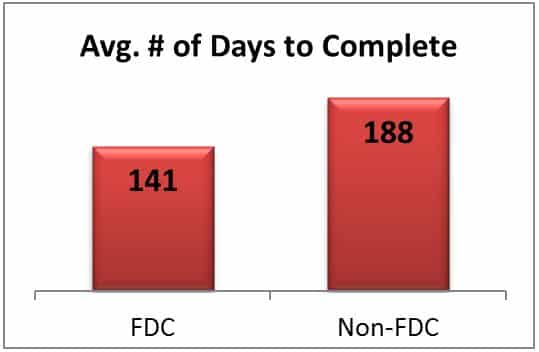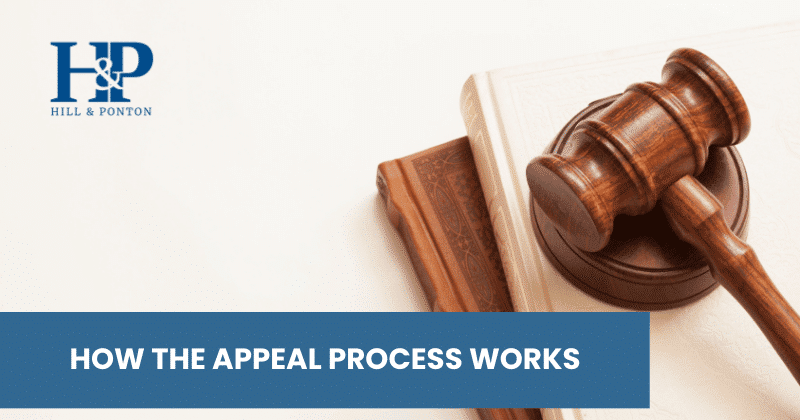In 2014, we posted a blog article about the new Fully Developed Claim (FDC) process and were hard pressed to find anything that showed if the system was actually speeding up the claim processing time for Veterans. Because it was so new at that time, it was difficult to find any real statistics; but alas, two plus years have passed, so let’s see if we can find any statistics now that it is 2017 and determine if the program is worth the hype.
What is an FDC?
First, an FDC, or Fully Developed Claim, is when a Veteran files a claim that has all the evidence attached to support the claim. The VA does not have to develop the claim by going through service or medical records and they do not have to wait for private treating physicians to respond to requests for records because everything is already attached. This takes time on the Veteran’s part but is usually a lot faster for the Veteran to complete than the VA.
Then, the Veteran is able to upload all the documentation and apply for benefits through eBenefits, making the process even quicker by bypassing snail mail and paper document handling.
A Veteran or survivor can file an FDC for several types of claims including disability compensation benefits as well as reopen a claim, file for secondary claims, and file for special claims such as IU or PTSD. They can also file for survivor benefits and pension.
The VA’s website has step by step instructions on how to file an FDC but they also recommend that those filing still get professional assistance through their local Veteran’s Service Agency or other professional assistance.
Now, Does it Really Shorten the Process?
 This is the big question of the day! Is it worth the extra work on the Veteran’s part to take part in this endeavor based on the amount of time it will save them by getting their claim processed faster?
This is the big question of the day! Is it worth the extra work on the Veteran’s part to take part in this endeavor based on the amount of time it will save them by getting their claim processed faster?
As of August 2015, the average time for an FDC to be processed was 141 days and a non-FDC was 188. Yes, the average difference in time was almost 50 days quicker for those filing an FDC than taking the conventional route.
As of January 2017, the number of days has decreased to 119 for an FDC to be processed. The VA expects the gap to continue to widen as time goes by and the backlog continues to decrease at the VA of claims waiting to be processed, which it is declining.
Backlog is Decreasing
The backlog of claims has decreased immensely since its height in March 2013. For the last 4+ years, the backlog has decreased from 611,000 to less than 100,000. Continuing to motivate Veterans to engage in programs like FDC will continue to decrease the backlog of claims that are waiting to be processed, decreasing wait times, decreasing appeal times, and decreasing frustration for Veterans who are waiting so long for the benefits they sacrificed so much for.
Based on testimony from the director of the American Legion’s Veteran’s Affairs and rehabilitation Division, Verna Jones, the reason the backlog of claims is decreasing so rapidly is because of the FDC program.
Ms. Jones testified before the House Veteran’s Subcommittee on Disability Assistance and Memorial Affairs and stated that because service officers are able to “give the VA a better quality product to work with,” (meaning the FDC packet) she has seen claims adjudicated in as little as 30-90 days.
As the backlog continues to decrease, the FDC will continue to speed up compared to non-FDC.
How Do I Make Sure My Claim Will Be Processed as an FDC?
There are several things a Veteran can do to ensure their claim is approved as an FDC:
- Register for an eBenefits account;
- Get help from an accredited Veteran’s Service Officer and assign them as your POA, they know the process and have the training to make sure all your documentation is in order;
- Gather all the relevant documents:
- Private medical records pertaining to the claim(s):
- Service medical records: the VA will still obtain your service records; but if you have them it will save time;
- Records describing or directly relating to the disability you are claiming;
- Buddy Statements to support your claim.
- File your claim through eBenefits or call 1-800-827-1000.
(Make sure you highlight or mark specific notes or records that describe or mention the specific disabilities or illnesses you are claiming if they are in records that refer to many issues.)
Is There a Catch?
No catch. The best part about filing an FDC is that you don’t have to start over if you don’t get it right. If your claim does not meet the criteria of an FDC, the VA will just declare it a non-FDC and continue to process it as it normally would any other claim.
You don’t have to start over or refile or do anything else.
Now, the wait time may be a little longer if they have to gather other information you may not have included, but despite that, because most of the information has already been attached, you will still probably be looking at a shorter processing time than if you had not attached evidence and just filed a claim.
So, either way, it is a win-win situation.


